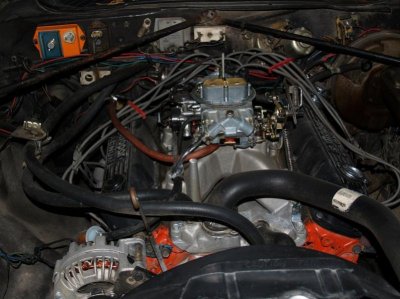blkmagnumgt
Member
[FONT=Verdana, Arial, Helvetica, sans-serif]Back in 2005 I bought this crate motor from Summit for $3499. Its a new, not rebuilt, Mopar Magnum 360. ( It was classified as a Magnum 380, This is the 380 hp, 411 torque) It recommended a 750 carb, and is not recommended for A/C. Keeping it tuned has been a chore, going through a set of plugs every few months. Plus it has a nasty, nasty cam when timed to where it runs correctly. My question is, I've thought about converting to EFI. Either getting a stock EFI manifold from a newer Magnum engine, or getting one of the EFI kits, that either replace the carb, or the intake. Question, If I do the conversion, will it run LESS radical with the cam, since the timing will be controlled by the unit, and if I used stock engine configuration, any chance I might be able to run A/C? The Mopar intake on it now has the thermostat housing closer to the passenger side, thus making stock A/C location unusable. Since this IS a production Mopar performance engine, any chance their is a set up designed for this specific engine?[/FONT]
[FONT=Verdana, Arial, Helvetica, sans-serif]PS [/FONT]
[FONT=Verdana, Arial, Helvetica, sans-serif]Bottom line, I removed this engine, and swapped a mild 360 ( Much to my friends surprise ) because using premium fuel, I get valve clatter if i stomp it, and diesels at idle if the RPM's rise. Don't get me wrong, its the most powerful motor i've ever owned, as my brother calls it, A race motor.. Can it be a little more civilized? [/FONT]
[FONT=Verdana, Arial, Helvetica, sans-serif]PS [/FONT]
[FONT=Verdana, Arial, Helvetica, sans-serif]Bottom line, I removed this engine, and swapped a mild 360 ( Much to my friends surprise ) because using premium fuel, I get valve clatter if i stomp it, and diesels at idle if the RPM's rise. Don't get me wrong, its the most powerful motor i've ever owned, as my brother calls it, A race motor.. Can it be a little more civilized? [/FONT]


















